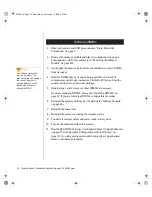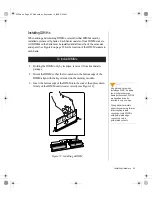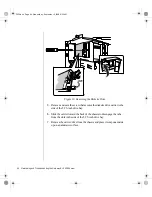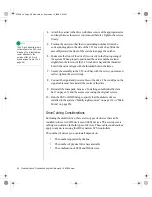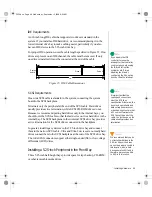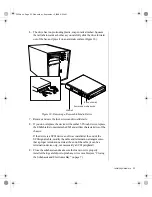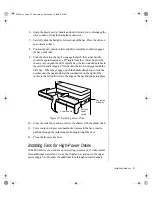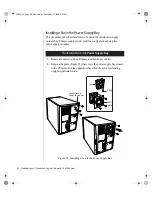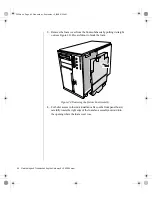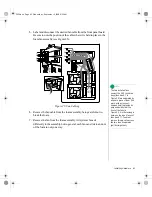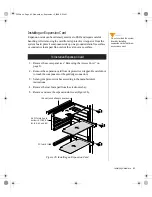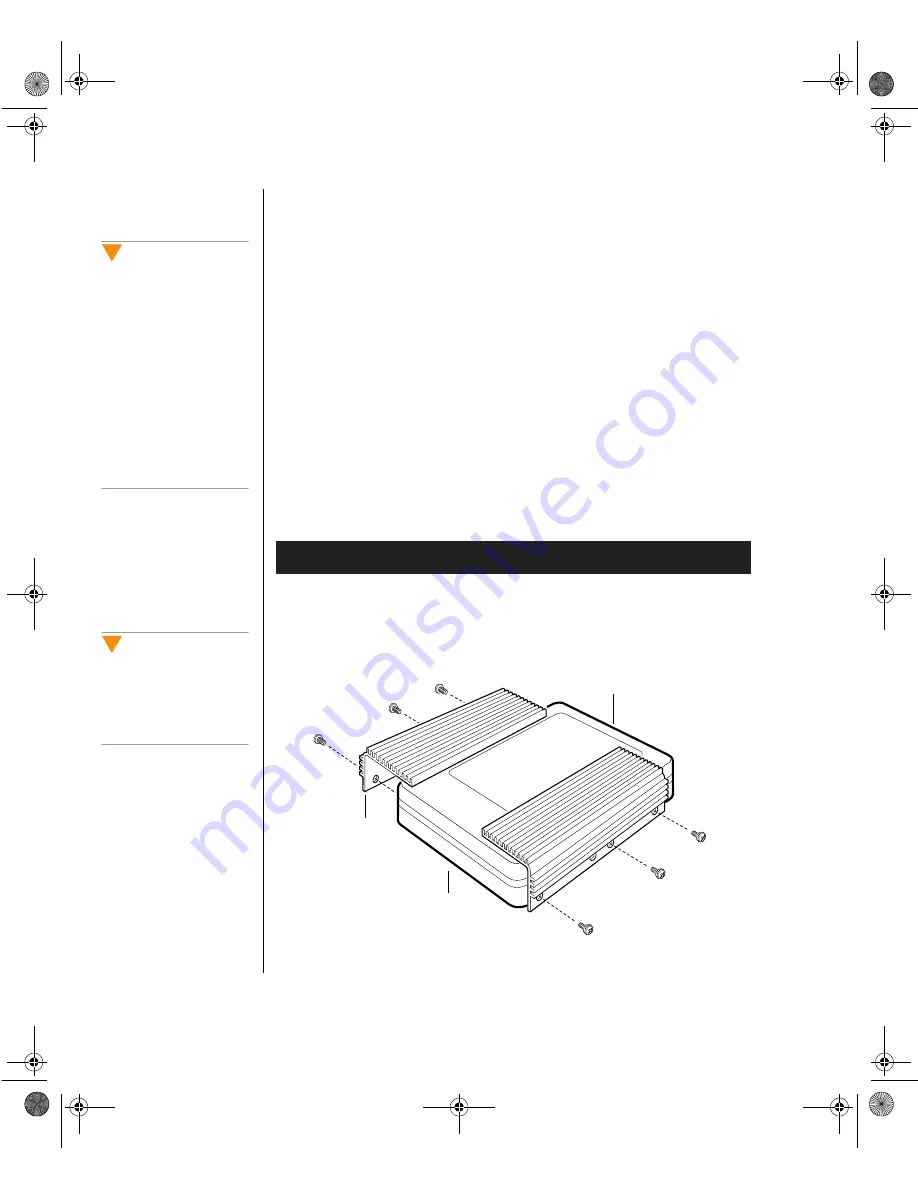
54 Maintaining and Troubleshooting the Gateway ALR 9200 Server
10.
Replace the access panel, see “Closing the System” on page 7.
11.
Close the front door.
SCSI Hard Disk Drives
The system supports a variety of SCSI devices. As shipped from the
supplier, the system might contain no hard disk drives. Contact your sales
representative or dealer for a list of approved SCSI devices. If you install
10,000 rpm SCSI hard drives, you must install heat sinks on the drives and
additional fans in the chassis. See the sections below for specific
instructions.
Installing Heatsinks on High-Power Drives
If you plan to use SCSI drives whose power exceeds 15 watts, you must
install heatsinks on those drives.
1.
Position each heatsink (Figure 19) so that the three screw holes in the
heatsink align with the corresponding holes in the hard drive. The
holes are placed so that you can position the heatsink in only one way:
with the fins extending along the side and the top of the hard drive.
Figure 19: Installing Heatsinks on a Hard Drive
To Install Heatsinks on Hard Drives
Caution!
Electrostatic discharge
(ESD) can damage disk
drives and other
components. The server can
withstand normal levels of
ESD while you hot-swap
hard disk drives. Performing
all procedures in this manual
at an ESD-protected
workstation. If one is not
available, wear an antistatic
wrist strap attached to
chassis ground when
handling components.
Caution!
If you install high-power
drives, you must also install
additional system fans. See
“Installing Fans for High-
Power Drives” on page 57.
Hard drive, label side
Heat sink
Hard drive, component side
3424.boo Page 54 Wednesday, September 2, 1998 9:23 AM



